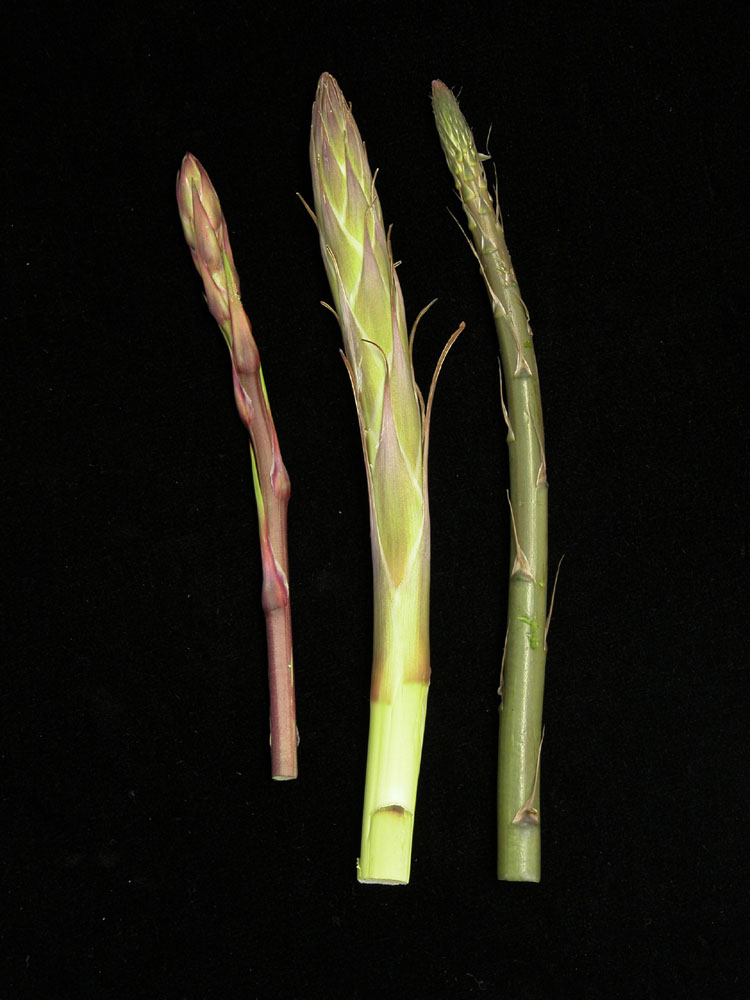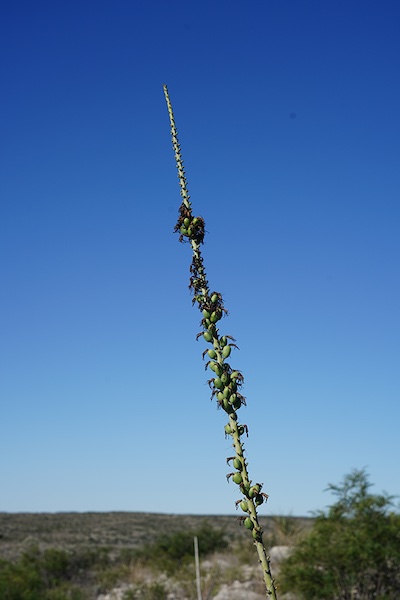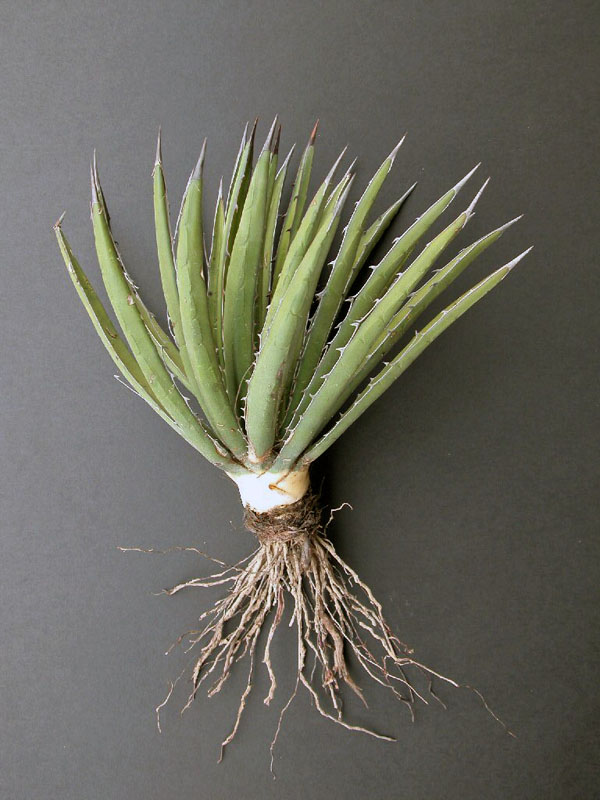Start the animation to make the agave bloom. Then hover your mouse on different parts of the agave to discover a dozen ways the Indians of Trans Pecos Texas used everything from agave leaves for sandals—to agave heart and flowers for food! But watch out—it has sharp spines and its juices can be toxic!
Leaves

- Fibrous leaves used for sandals, mats, baskets
- Fiber strands from leaves used for making cordage, needle and thread (spine with attached fibers), nets, bags, clothing/garments, paintbrushes, fish stringers, bowstrings, and “toilet paper” bundles.
Heart

- Food (baked)
- Drink (aguamiel) harvested by removing the bloomstalk and collecting the “sap” from the heart beneath it.
Bloomstalk

- Food (in bloom)
- Fire drills and hearths (dried)
- Building material (dried)
- Spear shafts (dried)
Flowers, Seeds, Nectar

- Nectar is sweet and edible
- Flowers, seeds, and sprouting seeds for food
Root

- Soap and shampoo from soapy chemical compounds (saponins)
- Paint emulsifier
- Fish poisons
Common in the Chihuahuan Desert, in the Trans Pecos and Lower Pecos regions of southwest Texas, the humble Agave lechuguilla, or lechuguilla for short, is a workhorse of desert subsistence. It has been an important plant for Native American people in Texas, New Mexico, and Mexico for about ten-thousand years!
Lechuguilla's roots and tough leaves are available year-round. It flowers between late spring and early summer, after rains. Like other agaves, the plant only blooms and fruits once in its life and then dies. Its long, slender bloom stalk reaches about 10 feet high. After blooming, it produces fruits and seeds which are usually available late summer and early fall.
Lechuguilla has been found at many archeology sites in southwest Texas. Artifacts made from the leaves and bloom stalk, such as sandals, nets, and mats, are sometimes found in dry caves. Direct evidence that it was used for food is found in coprolites (dried human poop) and quids (chewed leaf bases). Lechuguilla pieces—burned leaves and other plant parts—are found in earth ovens across southwest Texas. Earth oven cooking begins by harvesting the above ground part of the plant and cutting its leaves with sharp stones to reveal the “heart” of the plant, which looks somewhat like a pineapple. The heart is buried underground with hot rocks (heated by a fire) for several days to cook. By baking slowly underground, toxins found in the lechuguilla are eliminated, and the meaty flesh becomes sweet and edible. A warning to the curious, lechuguilla may be toxic when raw, and even its raw juices can irritate the skin!
Learn more about agave lechuguilla in the Lower Pecos Ethnobotany exhibit.
Illustration by Samuel M. Wilson.